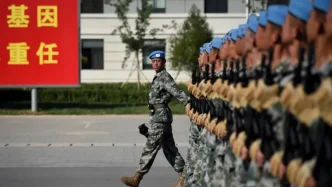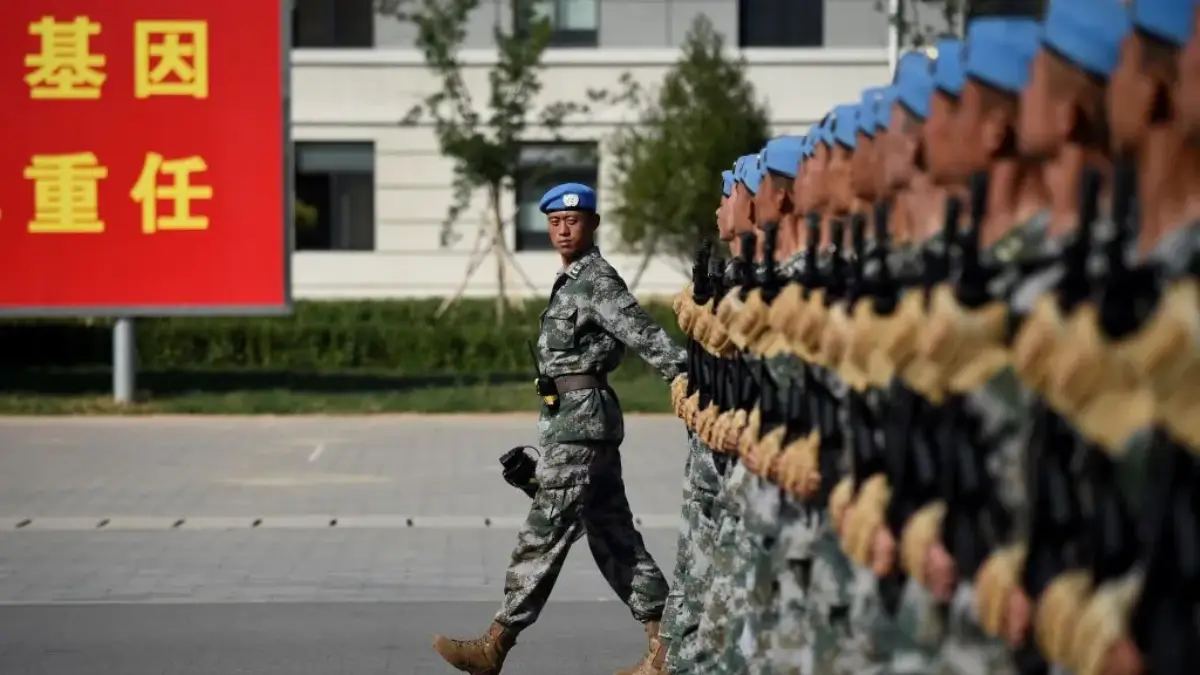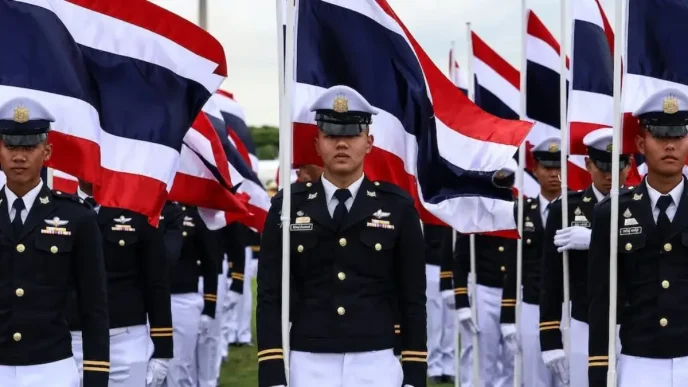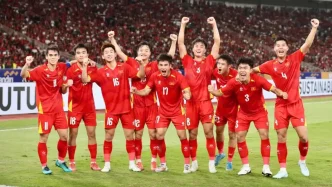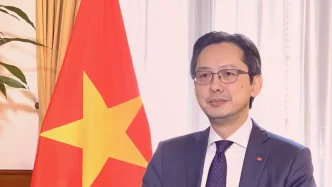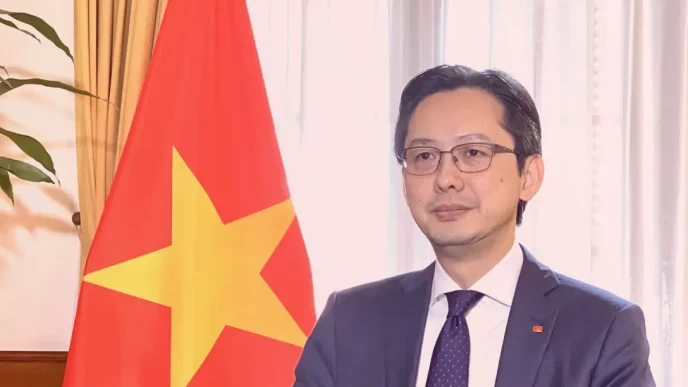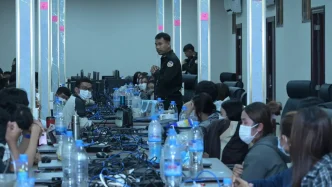In a significant step toward enhancing military cooperation, Vietnamese and Chinese ground forces concluded their first joint army training exercise on July 30, 2025, at the Jianglong Chongzuo Training Base in China’s Guangxi Zhuang Autonomous Region. The 10-day event, named “Joining Hands – 2025” brought together 140 officers and soldiers from both nations, marking a new chapter in bilateral relations amid shared goals of regional peace and border security.
A Milestone in Military Collaboration
The exercise, held from July 21 to 30, involved more than 20 vehicles and over 170 pieces of equipment, focusing on a wide range of military disciplines. These included reconnaissance, camouflage, unmanned aerial vehicle (UAV) operations, marksmanship, medical aid, chemical defense, field logistics, and coordinated tactical operations. A particular emphasis was placed on UAV exercises, which simulated six combat scenarios in mountainous terrain to enhance reconnaissance, strike, and rescue capabilities. This practical training underscored the commitment of both armies to improve coordination in challenging environments.
Throughout the program, the two forces adhered strictly to training plans, maintaining close coordination and ensuring the safety of all personnel and equipment. The rigorous exercises not only tested the soldiers’ skills but also fostered a deeper understanding of each other’s operational methods, laying the groundwork for future joint initiatives.
Strengthening Bonds Beyond the Battlefield
Beyond the military drills, the event featured cultural and sports exchanges that played a crucial role in building mutual trust and camaraderie. Activities such as basketball, table tennis, chess, calligraphy, traditional medicine demonstrations, and artistic performances provided opportunities for soldiers from both sides to connect on a personal level. These interactions highlighted the importance of cultural diplomacy in strengthening the ties between Vietnam and China, often described as a relationship of comrades and brothers.
At the closing ceremony, the significance of these exchanges was evident as military delegates from both countries toured displays of weapons and equipment, further symbolizing transparency and shared learning. The Joint Training Command also recognized the efforts of participants by awarding Certificates of Merit to 20 Vietnamese and 20 Chinese soldiers who excelled in the mission.
Leadership Voices on Shared Goals
The closing ceremony provided a platform for military leaders to reflect on the exercise’s broader implications. Major General Nguyễn Văn Lịch, Deputy Commander of Vietnam’s Military Region 1, emphasized the exercise’s role in translating high-level agreements into tangible outcomes. He described the successful conclusion as a vivid demonstration of effective cooperation between the two armies, contributing to regional peace, stability, and border security.
Similarly, Major General Chen Liang, Deputy Commander of the Southern Theater Command’s Ground Force of the People’s Liberation Army of China, hailed the training as a concrete step toward deepening military cooperation. He expressed China’s eagerness to expand joint training initiatives with Vietnam, aiming to elevate practical collaboration and reinforce the Comprehensive Strategic Cooperative Partnership between the two nations. This partnership, he noted, is vital for building a China-Vietnam community with a shared future that holds strategic significance.
Strategic Context of Vietnam-China Military Ties
The “Joining Hands – 2025” exercise must be viewed within the broader context of Vietnam-China relations, which have historically been complex due to territorial disputes in the South China Sea and differing geopolitical alignments. However, in recent years, both nations have prioritized dialogue and cooperation, particularly in areas such as border management and regional security. This joint training marks a pragmatic approach to building trust, focusing on shared interests rather than points of contention.
For Vietnam, strengthening military ties with China serves multiple purposes. It reinforces Hanoi’s commitment to maintaining stability along its northern border, a region that has seen sporadic tensions in the past. At the same time, it allows Vietnam to balance its foreign relations, engaging with a powerful neighbor while continuing to deepen partnerships with other global players like the United States, Japan, and the European Union. For China, the exercise aligns with its broader strategy of fostering closer ties with Southeast Asian nations under initiatives like the Belt and Road, while also projecting an image of a responsible regional leader.
The focus on border security during the training, exemplified by a demonstration of Vietnamese soldiers simulating the capture of terrorists in joint operations, reflects the practical concerns driving this collaboration. Both nations share a long land border that requires coordinated efforts to address issues such as smuggling, trafficking, and cross-border crime. By honing their tactical coordination, Vietnam and China are better equipped to tackle these challenges together.
Regional Implications and Security Dynamics
The successful completion of this joint exercise carries implications for the broader Southeast Asian region, where security dynamics are shaped by a delicate balance of cooperation and competition. As China expands its military presence and influence, neighboring countries often grapple with how to engage with Beijing without compromising their sovereignty or strategic autonomy. Vietnam’s participation in this training signals a willingness to engage constructively, potentially setting a precedent for other ASEAN member states.
Moreover, the emphasis on UAV operations and modern warfare tactics during the exercise highlights the growing importance of technology in regional security. As militaries across Southeast Asia modernize, joint exercises like this provide valuable opportunities to share knowledge and adapt to emerging threats, from cyber warfare to asymmetric conflicts. For Vietnam and China, mastering these capabilities together could enhance their collective ability to respond to crises, whether natural disasters or security breaches.
However, the exercise also raises questions about how far this military cooperation can extend. While both sides have expressed a desire to expand joint initiatives, underlying tensions—particularly over maritime disputes—remain unresolved. Analysts suggest that while exercises like “Joining Hands – 2025” are positive steps, they are unlikely to fully address deeper strategic divergences. Instead, they serve as confidence-building measures, creating space for dialogue and reducing the risk of miscalculations in sensitive areas.
Public Perception and Domestic Reactions
In Vietnam, public reactions to the joint exercise are likely to be mixed. While some view military cooperation with China as a pragmatic necessity for border stability, others remain wary of Beijing’s intentions given historical conflicts and ongoing disputes. The Vietnamese government has consistently emphasized that such engagements are aimed at peace and mutual benefit, but it must also navigate domestic sentiments that are deeply rooted in national pride and historical memory.
In China, the exercise is likely to be framed as a success of its neighborhood diplomacy, reinforcing the narrative of a benevolent power seeking to build partnerships rather than dominance. State media outlets are expected to highlight the cultural exchanges and shared achievements, portraying the event as a model for future collaborations with other regional partners.
Looking Ahead: A Foundation for Future Cooperation
As Vietnam and China move forward, the outcomes of “Joining Hands – 2025” offer a foundation for further military and strategic engagement. The commitment to expand joint training initiatives, as articulated by both Major General Nguyễn Văn Lịch and Major General Chen Liang, suggests that similar exercises could become a regular feature of bilateral relations. Such efforts could extend beyond ground forces to include naval or air force collaborations, though these would likely face greater scrutiny given the sensitivities around maritime issues.
For now, the focus remains on consolidating the gains from this exercise—improved coordination, enhanced trust, and a shared commitment to regional stability. The cultural and personal connections forged during the 10-day event may prove just as valuable as the tactical skills acquired, providing a human dimension to a relationship often defined by geopolitics.
As both nations navigate an increasingly complex regional landscape, the question remains: can this spirit of cooperation withstand the pressures of broader strategic rivalries? For Vietnam and China, the path to a truly shared future will depend on their ability to build on these moments of collaboration, ensuring that military ties serve as a bridge rather than a battleground.

